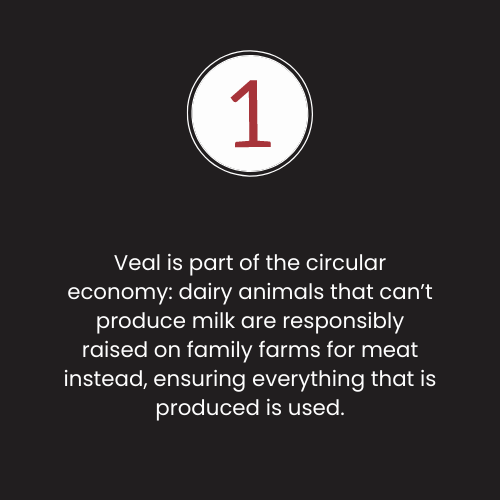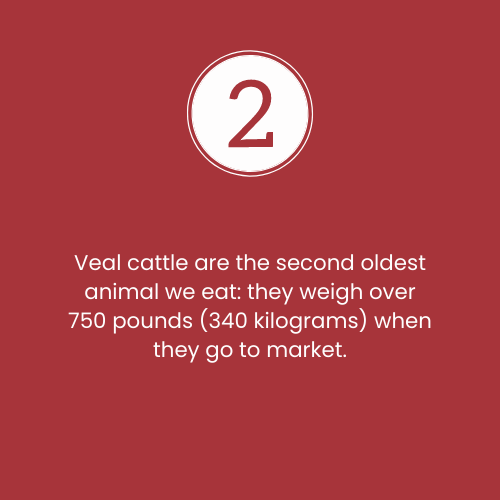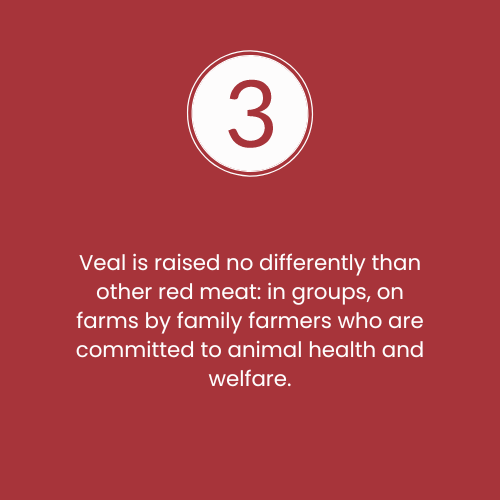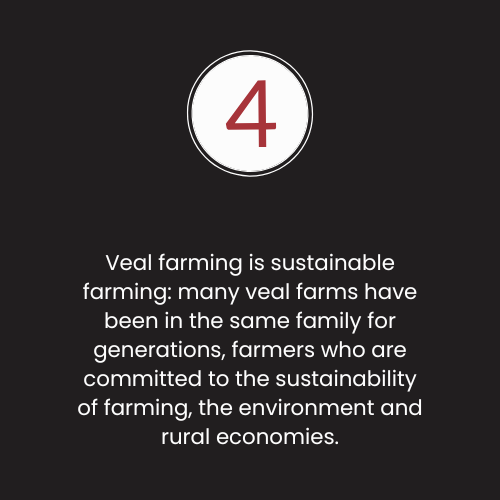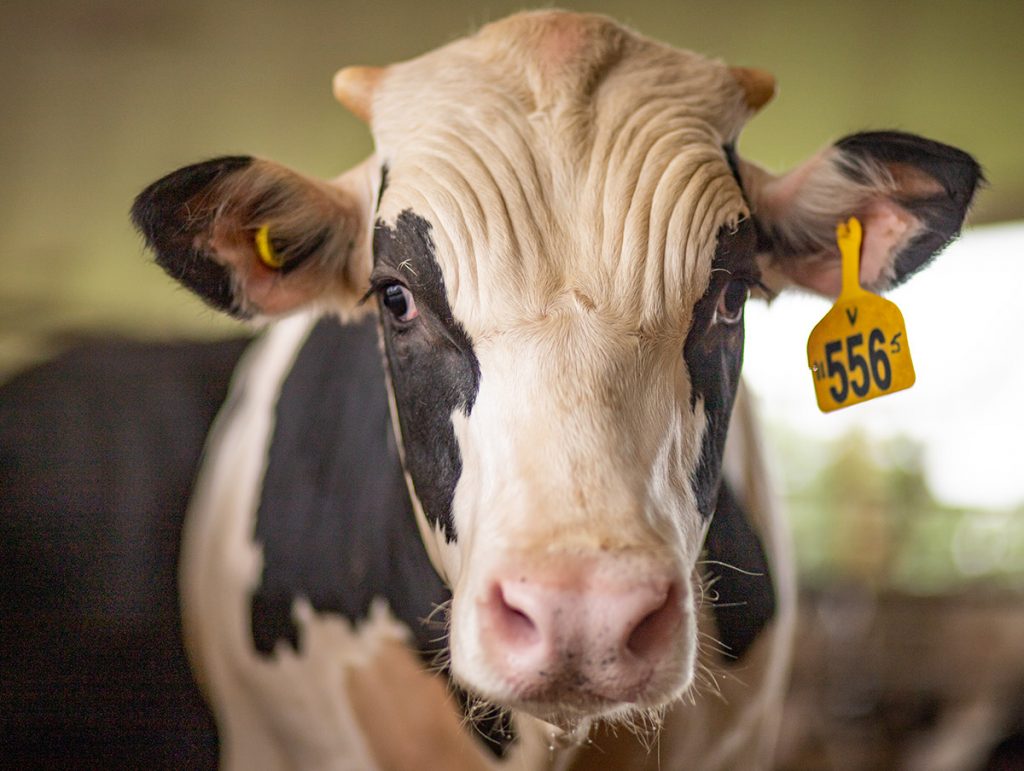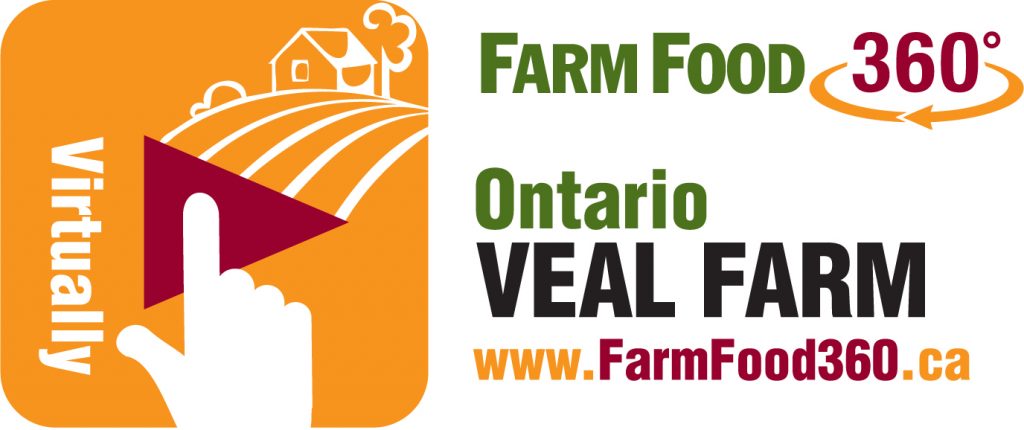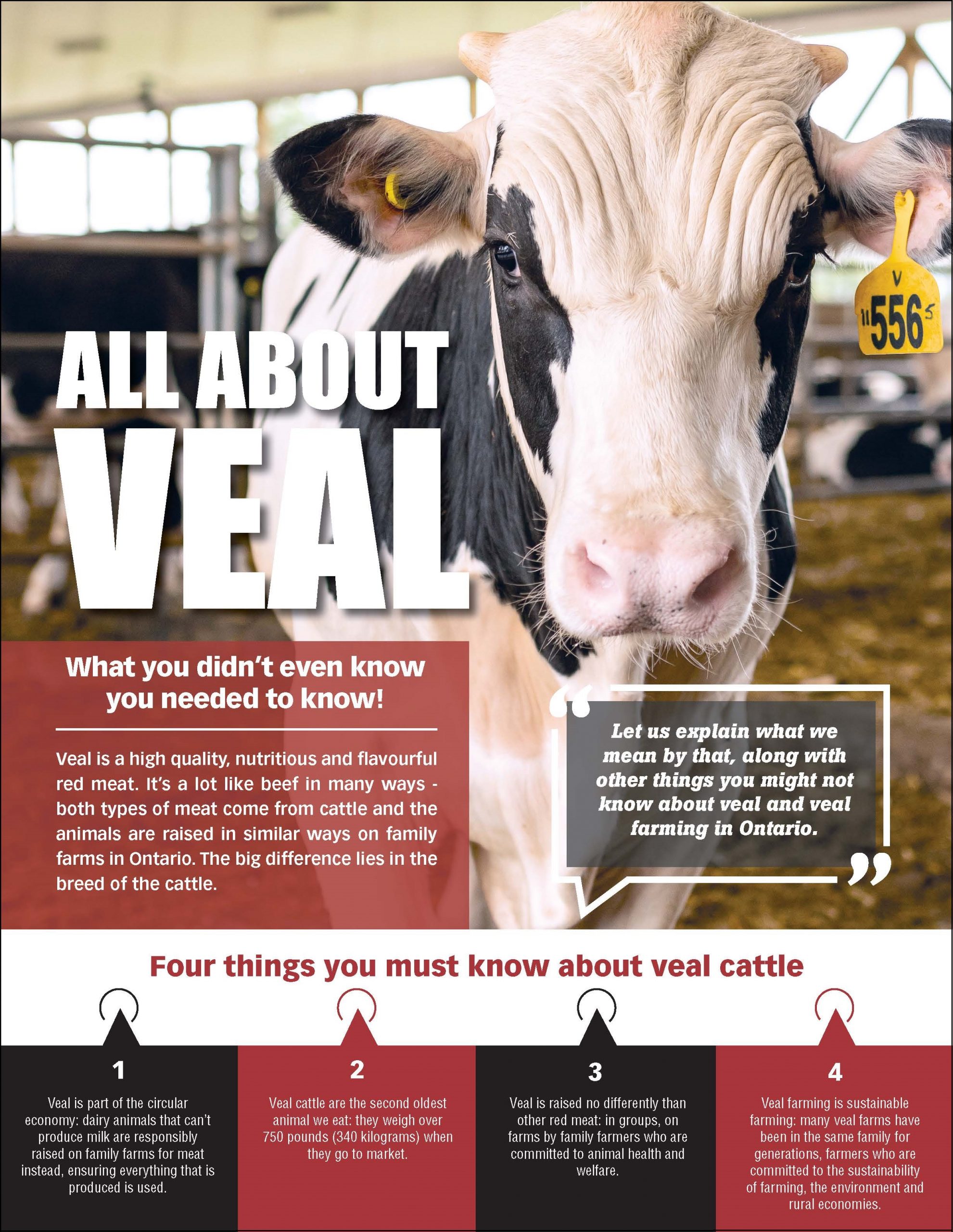In Canada, beef comes from a variety of cattle breeds, like Angus, Limousin, Charolais, Simmental or Hereford that are raised for their ability to produce meat. Most of Ontario’s veal cattle, however, come from the Holstein dairy breed, the familiar black-and-white animals that are most commonly used in dairy production because of their ability to produce a lot of milk. Other dairy breeds are Brown Swiss, Jersey, Guernsey and Ayrshire cattle.
In order for a dairy cow to produce milk, she must give birth to a calf. Female calves are known as heifers and they are raised to produce milk and have calves of their own. Male calves, called bulls, can’t produce milk so they are raised for meat instead, just like beef cattle. It’s part of how farmers contribute to the circular economy concept in food production: everything that is produced has a purpose.
